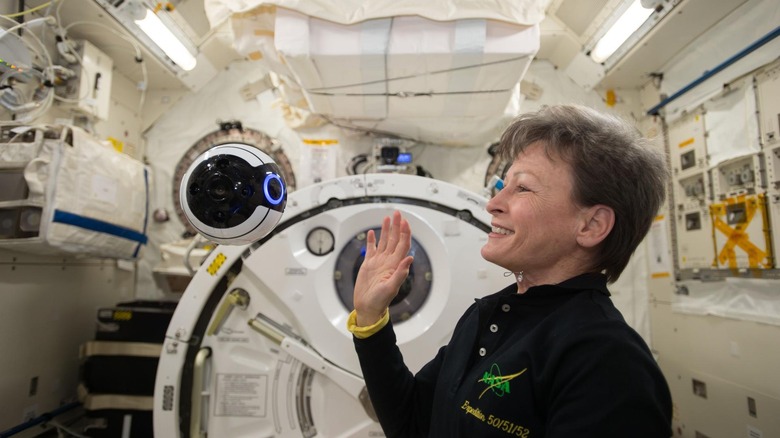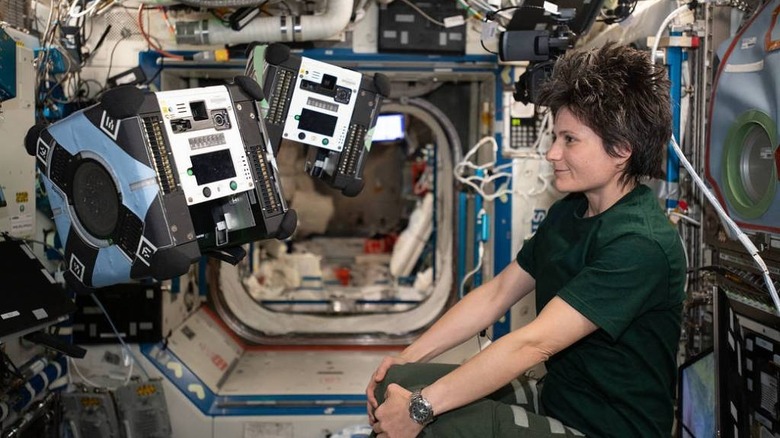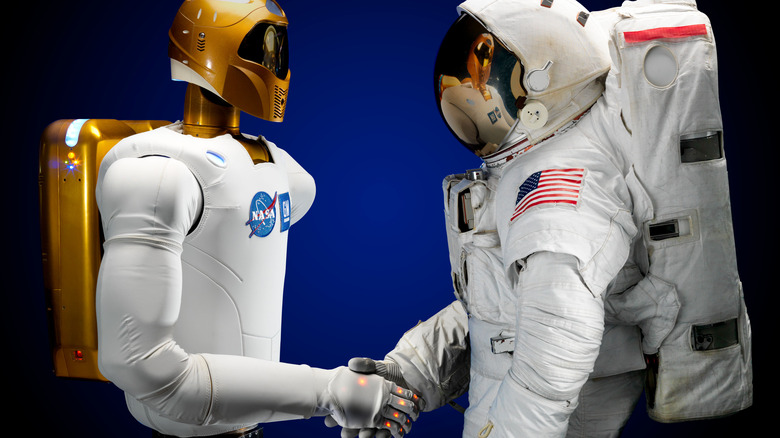Cosmic Companions: How Robots Work With Astronauts Aboard The ISS
The International Space Station (ISS) hosts a handful of astronauts all year round, who work on science projects and station maintenance, doing work like growing crops, performing medical experiments, and performing spacewalks for tasks like upgrading the station's power system. But with a crew of typically less than 10 people, only so much work can be done.
To make the ISS more efficient and to help out the crew, there are a variety of experimental robots on board the space station to perform various tasks. It sounds futuristic, but just like on the ground, the key is finding ways that robots can automate or assist in tasks that might be difficult or tedious for crew members.
As the ISS operates in a microgravity environment, meaning that for all practical purposes, there is no gravity there, robots can be designed quite differently than they are on Earth. There are three free-flying cubes, for example, called Astrobees, which can either operate autonomously or be controlled by crew members.
Each cube is 12.5 inches across, and the trio are cutely named Honey, Queen, and Bumble. They've been on the station since 2019 and have tools like built-in cameras and electric fans that spin to propel them around their environment.
The Astrobees are used for tasks like moving cargo around the station, thanks to a perching arm that they can use to grab onto cargo or hold onto handrails. They are battery-powered, so the team also has a docking station where they can go and recharge.
More handy robot pals
As well as the Astrobees, other robots are being tested out as well. There's a flying spherical camera called the JEM Internal Ball Camera 2, an experiment from the Japan Aerospace Exploration Agency (JAXA) which has been on the station since 2017. It takes photos and videos while crew members perform research, which can help as they don't have to stop and document what they're doing so often.
The original JEM Internal Ball Camera, which the model 2 is based on, was also known as the Int-Ball and is notable for its cute blue eyes and compact size, at just 15 cm across. It is also propelled by fans and uses a motion control system similar to drones used on Earth.
Another ball-like robot on the ISS was the European Space Agency's CIMON or Crew Interactive Mobile companion. Cimon is an assistant, a bit like Siri on your phone, which is designed to act as a database, computer, and camera. It is voice-operated and can play music, show procedures on a screen, take inventory, or search for objects. Cimon is larger, at 32 cm across, and has a face displayed on a screen — though it's arguably not nearly as cute as the Int-Ball.
Other robots have been tried on the ISS as well. There was the Robonaut, which was more human-shaped with a torso, arms, hands, and a head. It was recently upgraded with "legs," which are two climbing tools that will allow it to move around the station better. The upgraded Robonaut is being worked on for full deployment in the ISS as a technology demonstration.
Designing robots for space
While robots can be useful on the station, they also require a lot of testing and fine-tuning before they are ready for use. And designing something that can move around in zero gravity isn't easy.
The end results can be something that moves quite differently from a human. Talking about the Robonaut upgrade, Ron Diftler, Robonaut Project Manager within the Robotic Systems Technology Branch at the NASA Johnson Space Center, said: "The legs are very flexible. They can orient themselves in non-humanoid ways. It's not the kind of symmetry that you have in a human, but we were not trying to run a beauty contest."
The aim is to create something that can take over difficult or tedious tasks for the crew. Repetitive tasks are boring for humans and easier to automate for a robot, and obviously, there's a safety advantage to handing off risky tasks to robots, too.
"My goal and the goal of my division is that wherever humans go, be it an asteroid, back to the Moon, or on to Mars, we want to send a Robonaut," Diftler said. "We want to do so either before humans go to set things up, to go with them to help as they do their exploration ... or to maintain a habitat when humans aren't there."


